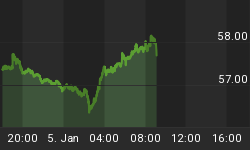In the June issue* of The National Investor, one of the things I described was what was appearing to be the end of a months-long run of U.S. dollar strength. As I'll be detailing anew in an upcoming commentary, several factors have combined to, in effect, completely change the dynamics affecting the greenback. Among these -- and not helping matters at all -- has been President Obama's insistence that the U.S. continue its free-spending and related "stimulus" policies, while the rest of the world at least makes some effort to rein in runaway debt growth.
But there is one overriding reason why a new round of U.S. dollar weakness might actually be desired by the world's policymakers. And that is, because they are flat-out terrified that deflation could get out of hand.
That's right - DEFLATION.
About a month ago, I penned a commentary entitled "A Day Late -- and a 'Flation' Short." (You can still read that CRITICAL piece at the front page of our web site at http://www.nationalinvestor.com/a_day_late__and_a.htm) I explained there that what has happened over the last few years has been the beginning of an unwinding from a massive round of hyperinflation of assets that went on for some three decades. Whether the implosion of Lehman Brothers, the ongoing (and, some say, worsening) of the housing market, a fresh decline in retail sales or other factors, it's clear that the economy continues to strain against the last generation's debt binge. DEFLATION -- not inflation -- is the clearer and more present danger.
About the only interlude that we've had from the deflationary undertow of the last nearly three years was the period of substantial U.S. dollar weakness that occurred for much of 2009. The so-called "reflation trade" that was launched by the greenback's steady decline resulted in big moves higher across the board in stocks, commodities, corporate bonds and other so-called risk assets. Now that the last few months have seen deflationary fears dramatically increase once more, about the only thing policymakers (at least here in the good old U.S. of A.) can think to do is to foster a new round of dollar weakness, in the hopes of a repeat of the 2009-style "reflation" environment, and some measure of economic growth.
Those efforts will, in the end, prove all but fruitless. After all, it should be clear to EVERYONE by now that the lack of economic growth is not due to new credit being too expensive...the supply of money too tight...or the dollar too high. All of it IS due to the need for (primarily) consumers to spend the next generation digesting the debts of the last generation.
Policymakers, led by the Federal Reserve, will only introduce NEW problems by their present course of action. And, eventually, a new round of hyperinflation -- this time, of the prices of everyday items, rather than of asset values -- will be one likely result. But for the foreseeable future, more "stimulus" and a newly-weakening dollar will merely take some of the sting and strength out of the DEFLATIONARY trend that will otherwise remain the economy's (and markets') chief threat.
* For a complimentary copy of the June issue of The National Investor -- wherein I also gave a recap of the FIVE major ANTI-Predictions for 2010 I made in January -- simply e-mail me at chris@nationalinvestor.com.















